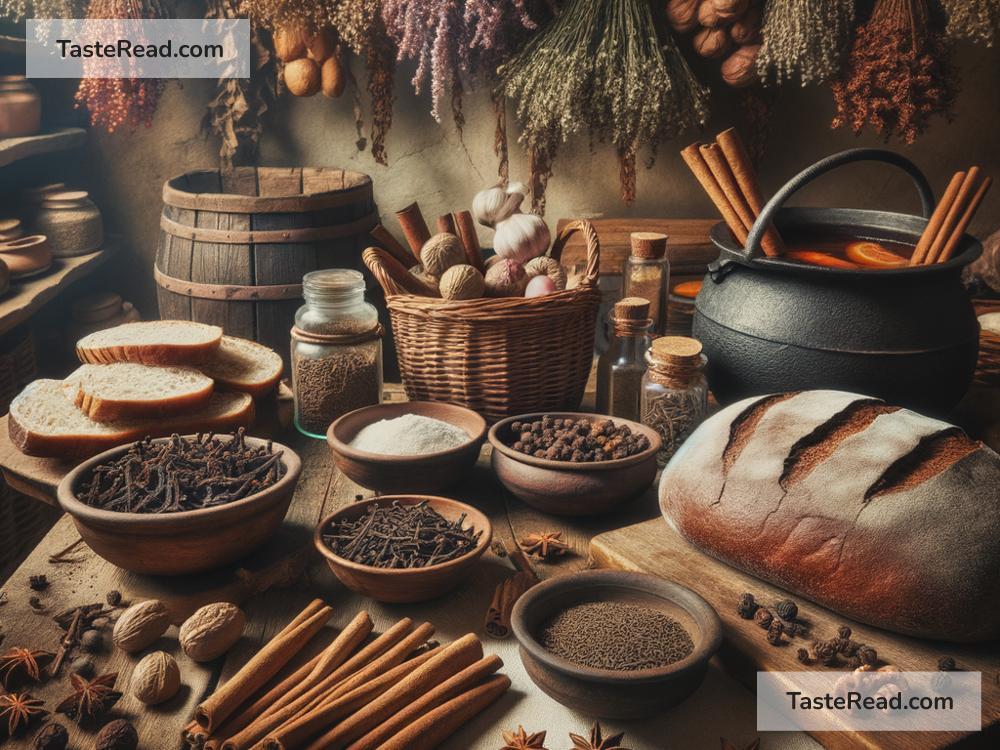The Role of Spices in Medieval European Cooking Traditions
In medieval Europe, spices played a very important role in cooking and food culture. They not only added flavor to dishes but also had various cultural, social, and even medical purposes. Today, spices are a common part of our kitchens, but back in the Middle Ages, they were rare and luxurious items. Understanding the role of spices in medieval European cooking traditions helps us see how food and trade shaped history.
Spices Were Highly Valued
During the medieval period, spices were incredibly expensive and rare. Many spices came from faraway regions like India, Southeast Asia, and the Middle East, and getting them to Europe involved long and challenging trade routes. The spice trade was dominated by merchants and traders who traveled these dangerous paths, carrying goods by ship or caravan.
Some of the most popular spices in medieval Europe included black pepper, cinnamon, nutmeg, cloves, ginger, saffron, cardamom, and mace. These spices were often worth their weight in gold, making them symbols of wealth and power. Royal families, nobles, and the wealthy used spices generously to show off their status. For most common people, however, access to spices was limited because they were simply too costly.
Why Were Spices So Important?
Spices were valued for several reasons beyond just flavor. Here are some of the key motivations for their use in medieval European cooking and culture:
-
Preservation of Food: Medieval Europe lacked modern refrigeration, which meant that food, especially meat, could spoil quickly. Spices were believed to help slow down spoilage or mask unpleasant smells and tastes from food that was no longer fresh. While they may not have functioned as preservatives in the way we understand today, they made old or poorly stored food more palatable.
-
Medical Uses: In medieval European medicine, food and health were deeply connected. Spices were often used not only in cooking but also as remedies for illnesses. For example, ginger was considered helpful for digestion, and saffron was believed to boost mood and energy. Using spices in food was thought to contribute to overall well-being, according to the medical theories of the time, like humoral balance.
-
Cultural and Religious Significance: Spices had symbolic meanings in medieval Europe. They were associated with the exotic lands from which they came and often had ties to religious rituals. For example, incense made from spices was used in church ceremonies. In cooking, spices added an air of sophistication and refinement to meals, making them a way to honor important guests or celebrate special occasions.
-
Flavor and Variety: Medieval European cuisine was heavily influenced by seasonality and availability. Spices gave cooks a way to enhance the flavor of simple, local ingredients and add variety to their meals. A pinch of cinnamon or a grind of pepper could transform a dish, making it feel luxurious and exciting.
Medieval Recipes: Spicy and Sweet Combinations
One interesting feature of medieval European cooking was the frequent combination of sweet and savory flavors. For instance, meat dishes were often flavored with spices like cinnamon and cloves and then sweetened with honey or dried fruits. These flavor combinations might seem unusual to modern tastes, but they were very popular at the time.
Spices were also used in sauces, drinks, and desserts. A good example is “hypocras,” a spiced wine mixed with ingredients like cinnamon, ginger, and sugar. Desserts often featured nutmeg or saffron, adding a rich aroma and a pop of color.
Medieval cookbooks, like The Forme of Cury written in England in the 14th century, include recipes that reflect this love for spices. These books were aimed at wealthy households who could afford such luxuries.
The Impact of Trade and Exploration
The use of spices in medieval Europe was directly tied to trade. Spices traveled thousands of miles through the famous Silk Road, bringing them from Asia to the Middle East and eventually to Europe. As demand for spices grew, Europeans began looking for new ways to access these regions. This desire played a significant role in the age of exploration, when Europeans began searching for sea routes to Asia to bypass middlemen in the spice trade.
For example, explorers like Vasco da Gama and Christopher Columbus were motivated in part by Europe’s hunger for spices. Columbus even ended up in the Americas while searching for a faster route to India and its spices!
Spices Today: A Lasting Influence
While spices are no longer as rare or expensive as they were in medieval Europe, their importance during the Middle Ages left a lasting impression. Historical recipes and flavors from that time continue to influence modern European cuisine. Think of mulled wine, spice cakes, or meats cooked with clove and cinnamon—these dishes carry echoes of medieval cooking traditions.
Additionally, the global spice trade in the Middle Ages laid the foundation for later exploration, cross-cultural exchange, and the international food markets we have today. Spices forever changed the way people thought about food and its possibilities.
Conclusion
Spices were much more than just ingredients in medieval Europe; they represented luxury, culture, health, and connection to the wider world. Whether they added flavor to food, served as medicine, or symbolized wealth, spices were highly prized components of medieval cooking traditions. Their influence shaped not only European cuisine but also global history, making them an essential topic to explore for anyone interested in the fascinating intersection of food and culture.


